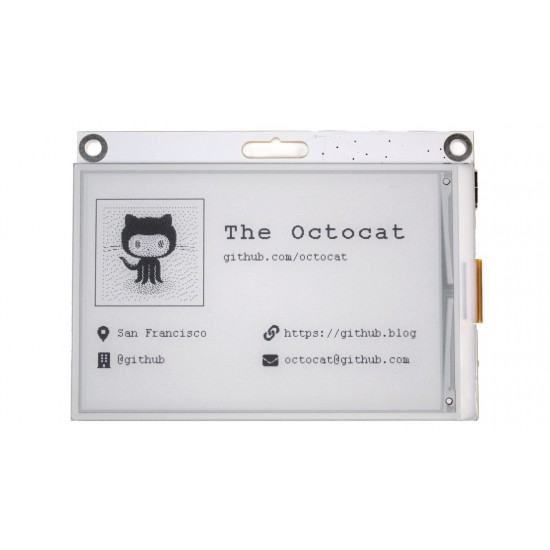



GGtag is a compact e-paper badge designed for versatile programming capabilities. It can be programmed with the web interface, USB serial, or sound! GGtag is centered around the RP2040 microcontroller and features a 3.52 " e-paper display. GGtag supports USB serial programming and emulation of 125 kHz RFID tags (ASK and FSK), providing flexibility for various applications.
Web Interface for Design and Programming
GGtag boasts a web interface that simplifies the creation, editing, and sharing of tag designs. Users can program these designs directly onto the device through our web browser. The interface supports a range of elements, including QR codes, images, and FontAwesome icons. Whether using sound or USB, GGtag can be programmed through this web-based interface.
A Hub for Creativity
As an addition to its practicality, GGtag serves as a platform for experimentation with data-over-sound and e-paper displays. All resources, including reference implementations, hardware specifications, and documentation, are openly accessible, facilitating adaptation for various custom applications.
Programming GGtag
GGtag supports two programming modes: sound and USB serial. Sound programming requires inserting a CR2032 battery into the holder and switching to the BATT position. For USB serial programming, GGtag can be connected to a USB host and switched to the USB mode. Both modes are compatible with the web interface hosted at ggtag.io, accessible through standard HTML browsers.
Sound Programming with GGtag
Programming GGtag via sound is achieved using the custom ggwave library. In this video demonstration, multiple GGtags are programmed simultaneously using a mobile phone. After the initial programming, GGtag enters deep sleep mode, requiring manual activation by pressing the side button. To conserve battery life, it is advisable to switch back to USB mode after programming.
USB Serial Programming for GGtag
For USB serial programming, GGtag relies on the Web Serial API through the web interface at ggtag.io. Compatibility extends to modern web browsers, such as Chrome and Edge, with mobile Chrome on Android also supported. This demonstration illustrates the use of a Pixel 5 phone for USB serial programming.
Emulation of RFID Tags
GGtag’s capabilities include the emulation of 125 kHz RFID tags, achieved through an ATtiny85 MCU and the avrfid firmware. Upon receiving an RFID command, GGtag generates the corresponding avrfid firmware and programs the ATtiny85.
RFID Emulation read by Flipper Zero
RFID Emulation read by USB RFID reader
Features & Specifications
GGtag is equipped with the following features and specifications:
RP2040 microcontroller
PDM digital microphone
3.52 " e-paper display
2 MB flash storage
Data-over-sound programming
USB serial programming
ATtiny85 microcontroller (utilized for RFID)
Powered by a CR2032 battery or USB
No driver installation required
Web editor
Support for mobile devices
E-paper display remains functional after programming
Functions as a passive RFID tag with a programmable ID for access control
- Stock: In Stock
- Model: GGTAG
- Weight: 40.00g
- Dimensions: 10.00cm x 7.00cm x 2.00cm

















